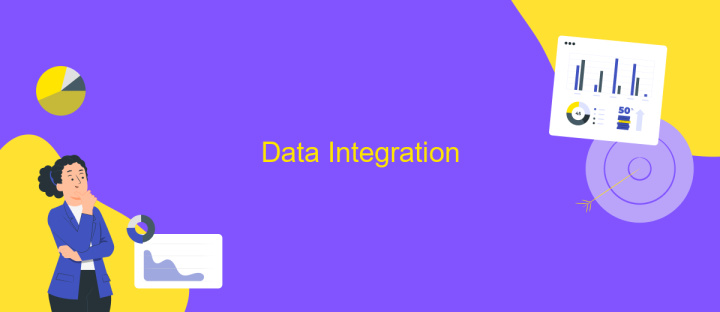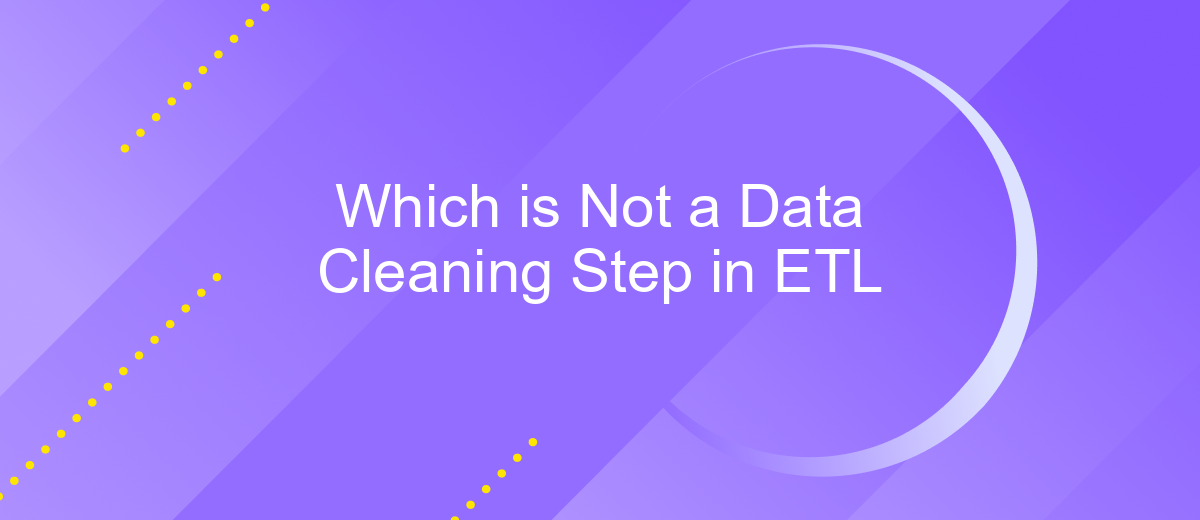Which is Not a Data Cleaning Step in ETL
Data cleaning is a crucial step in the Extract, Transform, Load (ETL) process, ensuring that the data is accurate, consistent, and usable. However, not all activities related to data management fall under data cleaning. This article explores various tasks involved in ETL and identifies which of them are not considered part of the data cleaning process.
Identify Data Quality Issues
Identifying data quality issues is a crucial step in the ETL process to ensure the integrity and reliability of the data being processed. Poor data quality can lead to inaccurate analysis and flawed decision-making. It is essential to detect and address these issues early in the process.
- Missing data: Identify and handle missing values to prevent incomplete datasets.
- Inconsistent data: Ensure uniformity in data formats and units across the dataset.
- Duplicate data: Detect and remove duplicate entries to maintain data accuracy.
- Outliers: Identify and assess outliers that may skew analysis results.
- Data validation: Implement rules to validate data against predefined criteria.
To facilitate the identification and resolution of data quality issues, tools like ApiX-Drive can be utilized. ApiX-Drive offers seamless integration capabilities, allowing for automated data validation and cleansing processes. This ensures that data quality is maintained throughout the ETL pipeline, leading to more reliable and actionable insights.
Data Transformation

Data transformation is a crucial step in the ETL (Extract, Transform, Load) process, where raw data is converted into a format suitable for analysis and reporting. This step involves various operations such as filtering, aggregating, joining, and enriching data to ensure it meets the business requirements. By transforming data, organizations can ensure consistency, accuracy, and compatibility, making it easier to draw meaningful insights and make informed decisions.
One of the key aspects of data transformation is integrating data from different sources. Tools like ApiX-Drive can significantly simplify this process by automating data integration and transformation tasks. ApiX-Drive allows users to connect multiple applications and services, enabling seamless data flow and transformation without the need for extensive coding. This not only saves time but also reduces the likelihood of errors, ensuring that the transformed data is reliable and ready for analysis.
Data Integration

Data integration is a crucial step in the ETL process, where data from different sources is combined into a cohesive, unified view. This step ensures that the data is consistent and can be used effectively for analysis and decision-making.
- Identify data sources: Determine where the data is coming from, such as databases, APIs, or flat files.
- Extract data: Pull the data from the identified sources.
- Transform data: Clean and format the data to ensure consistency and accuracy.
- Load data: Insert the transformed data into the target system, such as a data warehouse.
Services like ApiX-Drive simplify the data integration process by providing automated tools to connect various data sources seamlessly. This allows businesses to focus on analyzing the data rather than spending time on the technical aspects of integration. ApiX-Drive supports a wide range of integrations, making it a versatile choice for organizations looking to streamline their ETL processes.
Data Validation

Data validation is a critical step in the ETL process, ensuring that the data being transferred is accurate, complete, and reliable. This step helps to identify and rectify any inconsistencies or errors in the data before it moves to the next stage of transformation and loading.
Effective data validation involves a series of checks and rules to verify the integrity of the data. These checks can be automated using various tools and services to streamline the validation process and reduce manual effort.
- Format Validation: Ensuring data conforms to the expected format.
- Range Checking: Verifying that data values fall within a specified range.
- Consistency Checks: Ensuring data is consistent across different datasets.
- Uniqueness Verification: Checking for duplicate records.
- Completeness Checks: Ensuring no required data is missing.
Tools like ApiX-Drive can be integrated into your ETL workflow to automate data validation processes. ApiX-Drive offers a user-friendly interface and a range of integrations that help ensure your data meets the necessary quality standards before it is loaded into the target system.
- Automate the work of an online store or landing
- Empower through integration
- Don't spend money on programmers and integrators
- Save time by automating routine tasks
Data Profiling
Data profiling is a crucial step in the ETL process, involving the examination and analysis of source data to understand its structure, content, and interrelationships. This step helps in identifying data quality issues, such as inconsistencies, missing values, and duplicates, which must be addressed before data can be transformed and loaded into the target system. By thoroughly profiling the data, organizations can ensure that the subsequent steps in the ETL process are based on accurate and reliable information, ultimately leading to better decision-making.
Advanced tools and services, like ApiX-Drive, can significantly streamline the data profiling process. ApiX-Drive offers seamless integration capabilities, allowing users to connect various data sources and perform comprehensive data analysis with ease. By leveraging such services, businesses can automate and enhance their data profiling efforts, saving time and resources while ensuring high data quality. This integration not only simplifies the profiling process but also provides valuable insights that can be used to optimize the entire ETL workflow.
FAQ
What is the ETL process?
Which is NOT a data cleaning step in ETL?
Why is data cleaning important in the ETL process?
Can data cleaning be automated in the ETL process?
What are some common data cleaning techniques used in ETL?
Apix-Drive will help optimize business processes, save you from a lot of routine tasks and unnecessary costs for automation, attracting additional specialists. Try setting up a free test connection with ApiX-Drive and see for yourself. Now you have to think about where to invest the freed time and money!


